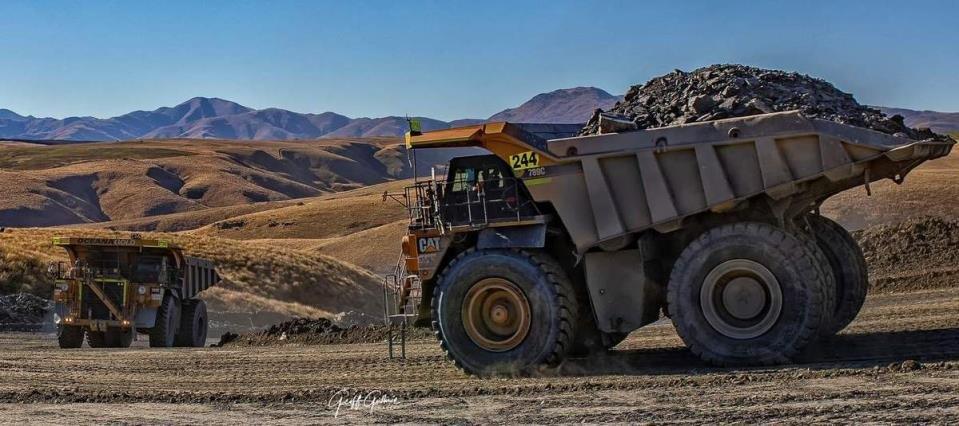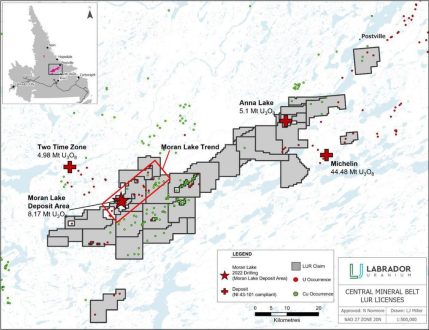
From the creation of a gold mine
Around 205,000 tons of gold have been mined worldwide to date. But it is a long way until gold is produced.
First, a land area is explored, test drillings are carried out as well as further investigations. Gold is actually not that rare, but it depends on the concentrations whether a mine is worthwhile. Then follows the development phase, in which the profitability of a mine is determined. Even if there are many gold discoveries, mining is often not worthwhile, even if technological progress means that ever lower gold grades justify the construction of a mine. So, if the explorations carried out look good, then it can go into the production phase. China produces the most gold; in 2022, around 330 tons of gold were produced there. China is also the world’s largest gold consumer. The gold comes from primary or secondary deposits and is extracted by open pit or underground mining. There are various methods for this.
An unusual method is so-called phytomining. This involves plants detoxifying the soil, an environmentally friendly method that could have a future. For example, there is a nickel mine in Malaysia where certain plants are harvested, then burned. The ash is then about a quarter nickel. Whether plants can also enrich gold is being tested in France. Today, gold is mainly extracted using the anode slurry process. Gold ingots used to be cast in sand molds. Today, gold is melted down and also cast to create gold bars. The ranks of well-positioned gold companies include Maple Gold Mines and OceanaGold, for example.
With partner Agnico Eagle, Maple Gold Mines – https://www.commodity-tv.com/ondemand/companies/profil/maple-gold-mines-ltd/ – is working on two Quebec gold projects in the Abitibi greenstone belt.
The successful gold producer OceanaGold – https://www.commodity-tv.com/play/oceanagold-reducing-debt-significantly-and-lowering-costs-through-production-increase-in-the-future/ – owns projects in New Zealand, the Philippines and the USA.
Current corporate information and press releases from Maple Gold Mines (- https://www.resource-capital.ch/en/companies/maple-gold-mines-ltd/ -) and OceanaGold (- https://www.resource-capital.ch/en/companies/oceanagold-corp/ -).
In accordance with §34 WpHG I would like to point out that partners, authors and employees may hold shares in the respective companies addressed and thus a possible conflict of interest exists. No guarantee for the translation into English. Only the German version of this news is valid.
Disclaimer: The information provided does not represent any form of recommendation or advice. Express reference is made to the risks in securities trading. No liability can be accepted for any damage arising from the use of this blog. I would like to point out that shares and especially warrant investments are always associated with risk. The total loss of the invested capital cannot be excluded. All information and sources are carefully researched. However, no guarantee is given for the correctness of all contents. Despite the greatest care, I expressly reserve the right to make errors, especially with regard to figures and prices. The information contained herein is taken from sources believed to be reliable, but in no way claims to be accurate or complete. Due to court decisions, the contents of linked external sites are also co-responsible (e.g. Landgericht Hamburg, in the decision of 12.05.1998 – 312 O 85/98), as long as there is no explicit dissociation from them. Despite careful control of the content, I do not assume liability for the content of linked external pages. The respective operators are exclusively responsible for their content. The disclaimer of Swiss Resource Capital AG also applies: https://www.resource-capital.ch/en/disclaimer/
Swiss Resource Capital AG
Poststrasse 1
CH9100 Herisau
Telefon: +41 (71) 354-8501
Telefax: +41 (71) 560-4271
http://www.resource-capital.ch
Telefon: +49 (2983) 974041
E-Mail: info@js-research.de
![]()




